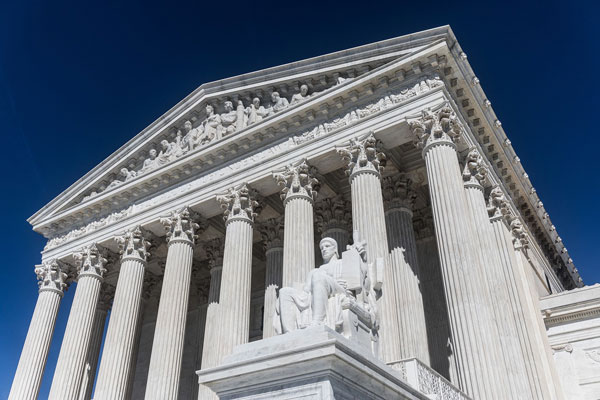The US Supreme Court concluded that race is no longer considered in the Harvard admission process

[The US Supreme Court. Photo credit to Pixabay]
The US Supreme Court made a decision that the consideration of race in the Harvard admission process is unconstitutional under the 14th Amendment of the “Equal Protection” in Students for Fair Admission v. President and Fellows of Harvard College.
Students for Fair Admissions v. President and Fellows of Harvard College was first argued on October 31st, 2022, and it was finally decided on June 29th, 2023.
The admission process for Harvard University includes evaluation of a student’s grades, recommendation letters, extracurricular, and race.
For the first initial screening, the Harvard admission officers look at six different categories: academic, extracurricular, athletic, school support, personal, and overall general factors including race.
Secondly, the Harvard admission ministers also look at particular geographic areas- which means that they want students from many different regions of the US especially.
Harvard wants students from both very busy cities and calm, relaxed country-side.
Total of 40 ministers in the admission committee vote for students within Harvard’s own initial screening elements as well as the geographic areas.
Students who have gotten the majority of the admission committe’s votes get a chance to be included in the last process of admission.
The final step of Harvard admission is called the “lop.”
During “lop,” students are judged by the admission ministers on the legacy status, recruited athlete status, financial aid eligibility, and race.
Legacy status is a part to check if a student has Havard graduate or student in his or her family.
Recruited athlete status looks for if a student had been an athlete, mostly recapping the sport section of the initial screening and also extracurricular.
Financial aid eligibility checks if there’s any student that the institution wants support, looking for potentials of the student himself.
The factor of race directly considers the background of the student and his or her race, which is the last factor that the admission ministers of Harvard are confirming for, which some students with other races other than white, like Asians, think that it is unfair.
Students for Fair Admissions wanted to abolish race in Harvard admission because they didn’t want to be judged by race, and students argued that it cannot make a perfectly fair admission and the acceptance.
Students for Fair Admissions sued Harvard College for keeping race as one of the points of consideration for admission.
The President and Fellows of Harvard College had won the district court, the lowest court.
Students for Fair Admissions appealed, and the case had gone to the circuit court, also known as the court of appeals.
The President and Fellows of Harvard College won again, and the Students for Fair Admissions appealed again, leading the case to the US Supreme Court.
The US Supreme Court made a different decision with the district court and the circuit court of appeal.
The Supreme Court stated that having race as one element of the admission violates the 14th Amendment of Equal Protection.
Students won’t be judged by their race because it cannot be considered in Harvard University admissions anymore.
This decision of the US Supreme court demonstrated a huge important step forward to a better, more equal, and fair society without discrimination or bias.
The Students for Fair Admissions v. President and Fellows of Harvard College proved that the laws have power to change the world into a better place.

- Yuna Lee / Grade 9
- Jones International Christian School

![THE HERALD STUDENT REPORTERS [US]](/assets/images/logo_student_us.png)
![THE HERALD STUDENT REPORTERS [Canada]](/assets/images/logo_student_ca.png)
